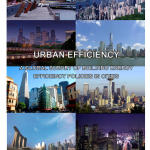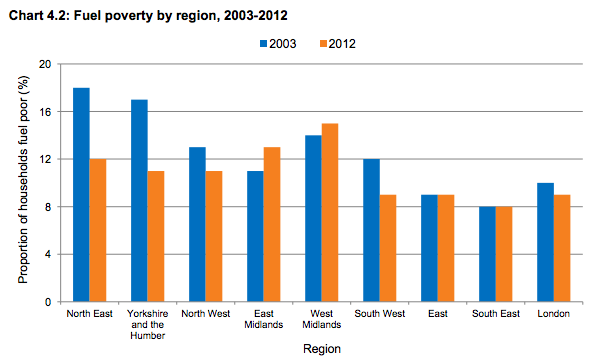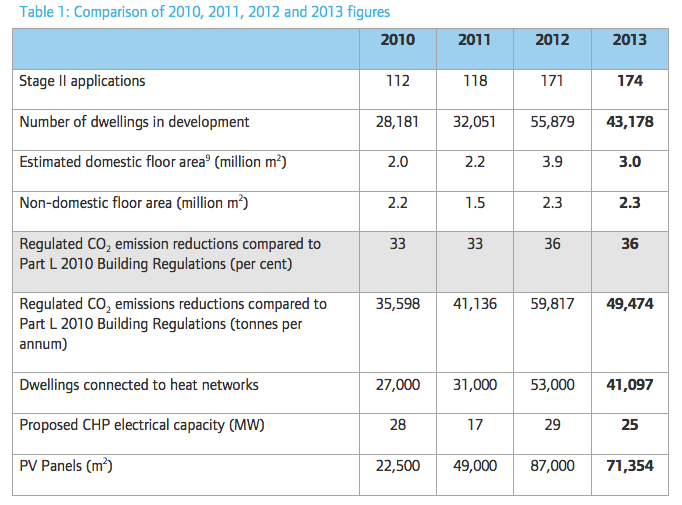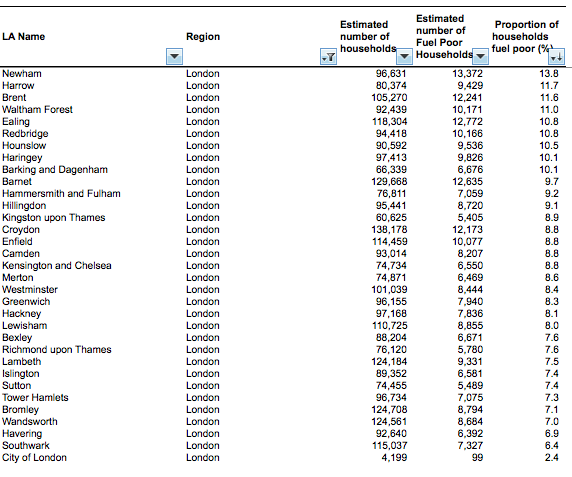Site search:
-
What’s new?
Energy for London Tags
Brent Buildings Camden Carbon Emissions CHP Cities Climate Adaptation Community Heating Community Initiatives Croydon Data DECC Decentralised Energy Distribution ECO Energy Costs Energy Efficiency Enfield FIT Fuel Poverty Funding Green Deal Hackney Haringey Housing Islington Lambeth Library Local Authorities Mayor Newham Ofgem Olympics Photovoltaics Planning RE:FIT RE:NEW Renewable Energy Retrofit Southwark Tower Hamlets Transport Waltham Forest Waste WestminsterEnergy Archives:
- February 2021 (1)
- January 2021 (15)
- December 2020 (15)
- November 2020 (9)
- October 2020 (3)
- August 2020 (5)
- July 2020 (3)
- June 2020 (4)
- April 2020 (10)
- March 2020 (5)
- February 2020 (2)
- January 2020 (3)
- October 2019 (1)
- September 2019 (4)
- August 2019 (2)
- July 2019 (1)
- August 2018 (1)
- November 2016 (8)
- October 2016 (8)
- September 2016 (2)
- August 2016 (8)
- July 2016 (14)
- April 2016 (12)
- March 2016 (16)
- February 2016 (8)
- January 2016 (4)
- December 2015 (1)
- November 2015 (1)
- October 2015 (16)
- September 2015 (3)
- June 2015 (1)
- May 2015 (1)
- April 2015 (1)
- March 2015 (1)
- February 2015 (1)
- January 2015 (1)
- December 2014 (18)
- November 2014 (4)
- August 2014 (8)
- July 2014 (7)
- June 2014 (25)
- May 2014 (8)
- April 2014 (4)
- March 2014 (12)
- February 2014 (7)
- January 2014 (13)
- December 2013 (11)
- November 2013 (15)
- October 2013 (15)
- September 2013 (18)
- August 2013 (5)
- July 2013 (20)
- June 2013 (33)
- May 2013 (8)
- April 2013 (16)
- March 2013 (25)
- February 2013 (14)
- January 2013 (20)
- December 2012 (23)
- November 2012 (23)
- October 2012 (25)
- September 2012 (14)
- July 2012 (12)
- June 2012 (43)
- May 2012 (20)
- April 2012 (8)
- March 2012 (40)
- February 2012 (39)
- January 2012 (40)
- December 2011 (22)
- November 2011 (40)
- October 2011 (33)
- September 2011 (48)
- August 2011 (40)
- July 2011 (58)
- June 2011 (41)
- May 2011 (80)
- April 2011 (38)
- March 2011 (33)
- February 2011 (25)
- January 2011 (24)
- December 2010 (3)
- November 2010 (7)
- October 2010 (6)
- September 2010 (7)
- August 2010 (1)
- July 2010 (2)
- June 2010 (4)
- May 2010 (1)
- March 2010 (3)
- February 2010 (3)
- December 2009 (5)
- November 2009 (2)
- October 2009 (3)
- July 2009 (3)
- June 2009 (1)
- April 2009 (1)
- March 2009 (1)
- February 2009 (1)
- January 2009 (1)
- December 2008 (2)
- October 2008 (1)
- September 2008 (1)
- July 2008 (1)
- March 2008 (2)
- January 2008 (2)
- October 2007 (1)
- September 2007 (3)
- July 2007 (1)
- March 2007 (1)
- February 2007 (3)
- November 2006 (3)
- August 2006 (1)
- February 2006 (1)
- May 2005 (1)
- February 2004 (1)
Library
London benchmarks for cooling demand in new residential developments
October 2015: The Mayor’s has published a set of “good practice cooling energy demand benchmarks for typical apartment dwelling types, based on reasonable design measures”.
The work was undertaken by AECOM for the GLA and supports the London Plan’s cooling hierarchy as set out in Policy 5.9 of Chapter 5 of the London Plan (London’s Response to Climate Change) which states the following [page 200 onwards]:
Major development proposals should reduce potential overheating and reliance on air conditioning systems and demonstrate this in accordance with the following cooling hierarchy:
- minimise internal heat generation through energy efficient design
- reduce the amount of heat entering a building in summer through orientation, shading, albedo, fenestration, insulation and green roofs and walls
- manage the heat within the building through exposed internal thermal mass and high ceilings
- passive ventilation
- mechanical ventilation
- active cooling systems (ensuring they are the lowest carbon options).
Two case studies where overheating in London developments has been identified are referenced in the study, including the Seagar Distillery redevelopment in Lewisham, as well as a paper, Forecasting future cooling demand in London, which estimates that the London residential sector could be responsible for an extra 100,000 tonnes CO2 per year by 2030 as a result of cooling.
A number of conclusions and recommendations are made in the study (p60 onwards) including:
- GLA could produce a checklist for developers to complete with information about glazing ratios, shading methods, ventilation options etc. to help determine whether the development is likely to have overheating problems that should be investigated further. It could be used to identify when detailed modelling is required and could help monitor typical responses to the cooling hierarchy.
London Heat Supply Workshop Presentations
October 2015: The GLA held a London Energy Plan: Heat Supply workshop on the 25th of September – the slides for which have just become available and can be downloaded here. The workshop included presentations from the GLA on their forthcoming Energy Masterplan for London; from Camden Council on their decentralised energy plans; and from consultancy Element Energy on the work they are undertaking for the GLA through the development of a heat plan model.
Posted in Decentralised Energy, Library
Tagged Decentralised Energy, Heat Maps, Planning
Leave a comment
The Role of Energy Efficient Buildings
15 October 2015: New study by those excellent boffins at Ecofys for European insulation trade body Eurima which highlights that “Beyond the main benefits of energy efficiency, such as reduced energy costs and greenhouse gas emissions, energy efficiency in buildings also has the potential to reduce costs and increase efficiency on the supply side. “
Why would that be the case? It’s due to the amount of heating that is anticipated to shift from gas to electricity (boilers to heat pumps) over the coming decades:
Zero Emission Buses
December 2014: The Institute for Sustainability, in collaboration with Transport for London (TfL), has launched a review report that outlines how to calculate the economic and operational feasibility of delivering London’s plan for zero emission buses, helping improve air quality in the city. Full details and report available here.
A Global Survey of Building Energy Efficiency Policies in Cities
 December 2014: A pretty major study undertaken for the C40 Cities network – ‘Urban Efficiency: A Global Survey of Building Energy EfficiencyPolicies in Cities’ – which was sponsored by Tokyo Metropolitan Government. The report is available to download here.
December 2014: A pretty major study undertaken for the C40 Cities network – ‘Urban Efficiency: A Global Survey of Building Energy EfficiencyPolicies in Cities’ – which was sponsored by Tokyo Metropolitan Government. The report is available to download here.
The report’s objectives in terms of building energy efficiency programmes were to:
- capture the range of different policies being implemented in cities around the world;
- obtain detailed information on the necessary conditions, opportunities and potential challenges when introducing and implementing such initiatives; and
- analyse what approaches have been successful in which context and why.
The policies it highlights as being most commonly implemented across cities across the world include:
- Building Energy Codes
- Reporting and benchmarking of energy performance data
- Mandatory auditing and retro-commissioning
- Emissions trading schemes
- Green building rating and energy performance labelling
- Financial incentives
- Non-financial incentives
- Awareness raising programmes
- Promoting green leases
- Voluntary leadership programmes
- Government leadership
A chapter – ‘Experiences from Frontrunner Cities’ – presents detailed case studies from “ten pioneering C40 cities implementing various kinds of programmes to drive energy efficiency and sustainability in existing commercial and residential buildings” – but doesn’t unfortunately include experiences from London. London is however included in a ‘policy map’ survey for new and existing buildings (pages 19-21).
Page 34 mentions “Almost all cities have shown a willingness to lead by example. In London, all new buildings for the Greater London Authority are required to meet the London Development Agency’s Sustainable Design and Construction Standards or exceed targets in the London Plan.” Some information on the application of the LDA’s SDC Standards can be seen from a MQ from earlier this year here.
Elsewhere in the report, London’s Better Building Partnership initiative is referenced. Pages 40 and 41 also provide a useful list of weblinks to London documents on energy efficiency initiatives.
A field study of urban microclimates in London
December 2014: Open access paper published in the January 2015 issue of Renewable Energy.
“This paper aims to address the characteristics of urban microclimates that affect the building energy performance and implementation of the renewable energy technologies. An experimental campaign was designed to investigate the microclimate parameters including air and surface temperature, direct and diffuse solar irradiation levels on both horizontal and vertical surfaces, wind speed and direction in a dense urban area in London. The outcomes of this research reveal that the climatic parameters are significantly influenced by the attributes of urban textures, which highlight the need for both providing the microclimatic information and using them in buildings design stages. This research provides a valuable set of microclimatic information for a dense urban area in London. According to the outcomes of this research, the feasibility study for implementation of renewable energy technologies and the thermal/energy performance assessment of buildings need to be conducted using the microclimatic information rather than the meteorological weather data mostly collected from non-urban environments.”
Available to download here.
Microclimatic effects of green and cool roofs in London
December 2014: Paper presented in the latest issue of academic journal Energy in Buildings – Microclimatic effects of green and cool roofs in London and their impacts on energy use for a typical office building – which presents the results from a modelling study that assessed the effectiveness of retrofitted green and cool roofs at reducing energy use for a typical office in Central London. These technologies were compared to application of retrofitting traditional insulation.
The building modelling results indicate that in the current climate, green roofs reduce annual energy use within the building. The level of savings are reduced when green roofs are dry in the summer. Cool roofs are more effective in the summer, but result in an annual energy penalty due to their performance in winter. In a 2050 climate scenario, both green and cool roofs result in a reduction in annual energy use. The application of traditional insulation is the most effective technology at reducing annual energy use. Adding insulation and a green or cool roof reduces the relative effectiveness of the roofs.
Unfortunately – the paper is not available for free..
Energy exchange in a dense urban environment
December 2014: Two papers from the December issue of academic journal Urban Climate – presented at ICUC8: The 8th International Conference on Urban Climate and the 10th Symposium on the Urban Environment – both publicly available.
- Energy exchange in a dense urban environment – Part I: Temporal variability of long-term observations in central London – Though anthropogenic impacts on boundary layer climates are expected to be large in dense urban areas, to date very few studies of energy flux observations are available. We report on 3.5 years of measurements gathered in central London, UK.
- Energy exchange in a dense urban environment – Part II: Impact of spatial heterogeneity of the surface – The centre of cities, characterised by spatial and temporal complexity, are challenging environments for micrometeorological research. This paper considers the impact of sensor location and heterogeneity of the urban surface on flux observations in the dense city centre of London.
Contribution of wood burning to PM10 in London
14 December 2014: Sunday Times article covering how ‘Wood-fired stoves fuel city pollution‘. The author points to evidence supporting the article’s findings in an academic paper (fully available) published earlier this year in the journal ‘Atmospheric Environment‘ ‘Contribution of wood burning to PM10 in London‘:
“Air pollution from domestic wood burning has long been recognised as an important contributor to poor ambient air quality in Scandinavian and alpine regions of Europe where wood burning is routinely used for residential space heating. However, recent evidence is suggesting that biomass burning might be more widespread…The current study sought to determine the existing contribution of wood burning to PM10 in London so that the impacts of increased biomass burning can be quantified in the future.“
London Plan spurs on carbon savings in new developments
30 June 2014: The latest annual assessment report of energy and carbon savings secured through the Mayor’s planning requirements has just been published by the GLA.
An energy assessment is required for each planning application referable to the Mayor, setting out how the London Plan energy policies will be met within the development. Specifically, applicants are required to set out how the planning applications apply the following energy hierarchy: Be lean: use less energy / Be clean: supply energy efficiently / Be green: use renewable energy. Further information on the London Plan energy policies can be viewed here.
The report provides an overview of the number of developments that have been approved by the Mayor and boroughs for planning, and importantly, the extent that these developments have committed to the use of sustainable energy solutions to help reduce their carbon and energy impact. The report summarises that – in 2013 alone – the London Plan’s energy policies have supported:
- circa £17 million of investment in combined heat and power (CHP) plant able to produce 25MW of electricity and a similar amount of heat – broadly equivalent to the amount required to supply 50,000 homes.
- around £103 million of investment in heat network infrastructure for circa 41,000 communally heated dwellings
- £13 million in photovoltaic panels and additional investment in other renewable energy technologies
- Regulated CO2 emission reductions of 36 per cent more than required by Part L 2010 of the Building Regulations. This represents a circa 30 per cent regulated CO2 reduction compared to the new 2013 Building Regulations (ie London Plan policies are already directing developers to energy strategies delivering 30% more CO2 savings above the government’s new building regulation requirements, which came into operation in April 2014).
Also provided is a summary of what has been secured over each of the past 4 years as a result of the London Plan’s energy policies.
This highlights that potentially:
- More than 150,000 new dwellings will be connected to district heating networks in London
- Close to 100 MW of CHP capacity has been secured
- And over 230,000 m2 of PV is to be installed.
Vulnerability of London’s Economy to Climate Change
June 2014: Academic research from 2013 examining a model “developed to explore the sensitivity of the London economy to loss of production capacity in sectors affected by climate change related damage.” The paper is fully downloadable here.
London Fuel Poverty Statistics
June 2014: DECC have just released their 2014 Annual Fuel Poverty Statistics Report, accompanied by a dizzying number of data sets (all for 2o12), which attempt to detail fuel poor households by housing type, who lives there, by region etc.etc. The headlines of all this work is that government estimate that, in 2012, absolute numbers of fuel poor households had fallen slightly, when compared to previous years, to approximately 10% of all households in England. The overall change in the number of households in fuel poverty was relatively small – with the reduction happening mainly due to income increases for higher income fuel poor households. However, it’s also reported that the number of households in fuel poverty is projected to increase in 2014, with increases in energy costs a key factor.
Key findings include:
- The importance of energy efficiency: households are far less likely to suffer fuel poverty if they live in a better insulated home
- The much higher incidences of fuel poverty in unemployed households, and those living in privately rented accommodation.
Though the data indicates a lower proportionof fuel poor households in London than other regions (attributed in the report to higher incomes in London and greater access to the gas grid) the findings above are of particular importance to the capital due to the high (and increasing) number of households living in the privately rented sector, and the much lower levels of activity achieved by the government’s energy efficiency programmes in London.
The recent changes adopted by government in how to define when a household is in fuel poverty (as set out in the government’s 2013 ‘Fuel Poverty: A Framework for Action) – under a new ‘Low Income Household Costs’ (LIHC) indicator – specifically takes housing costs into account for the first time. Not surprisingly, this was thought to have a significant impact to the numbers of fuel poor in London due to the higher housing costs observed in the capital – with a predicted near 50% increase in the number of fuel poor households (see here for details). The Fuel Poverty report doesn’t however appear to provide any commentary on how differences between regional housing cost differences may have impacted on fuel poverty numbers.
 Though the proportion of fuel poor households in London is estimated to be lower than most other regions it can also be seen from graph above (copied from the report) that London has seen a much smaller drop across the decade in the number of fuel poor homes than other regions.
Though the proportion of fuel poor households in London is estimated to be lower than most other regions it can also be seen from graph above (copied from the report) that London has seen a much smaller drop across the decade in the number of fuel poor homes than other regions.
The key data breakdown for London is set out in a separate spreadsheet document – the ‘2012 sub-regional fuel poverty data: low income high costs indicator‘. The data includes a local authority breakdown of data and reports that Newham has the highest incidence of fuel poverty in London with close to 1 in 7 homes deemed to be fuel poor, followed by Harrow, Brent and Waltham Forest.
Table 3 of the dataset breaks down the local authority data further to ‘Lower Super Output Area’. Data on fuel poor households by London Parliamentary constituencies is also provided.
‘Fuel Poverty Trends 2003-12’ provides long term trends under the new Low Income High Costs (LIHC) indicator including a time series on number of households estimated to be fuel poor. The data for London is copied below and indicates that the proportion of London households in fuel poverty initially dipped in the early party of the century, but has increased again, hitting a maximum of 13.2% in 2010, before falling again slightly.
The ‘Fuel Poverty Detailed Tables‘ provide limited regional information, but provided data on fuel poverty by housing type, age of residents, age of dwelling, energy efficiency of dwelling, working status, tenure etc. An additional indicators note is also available here.




